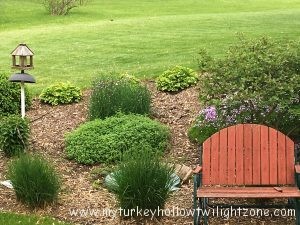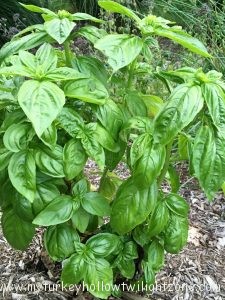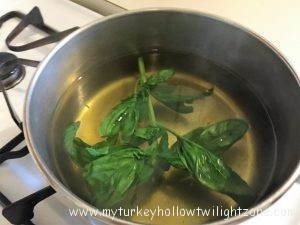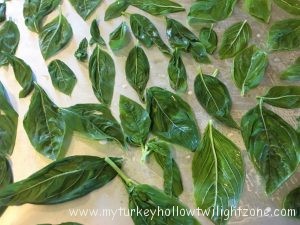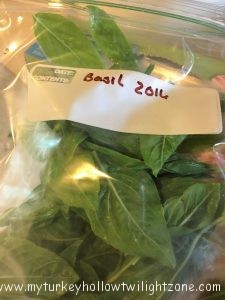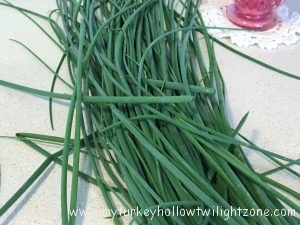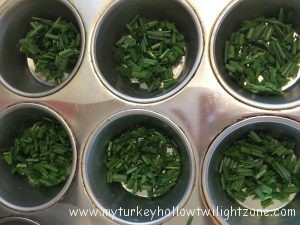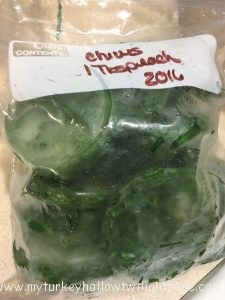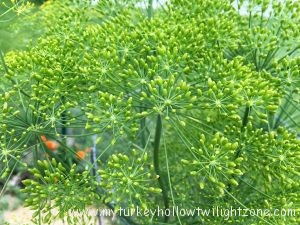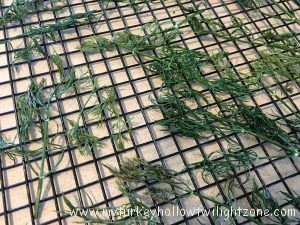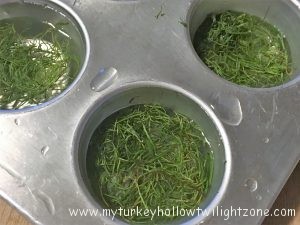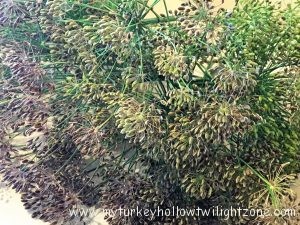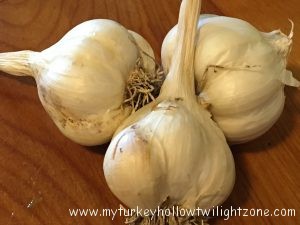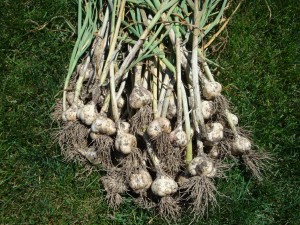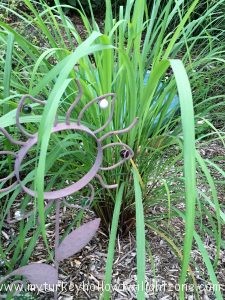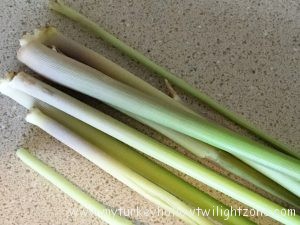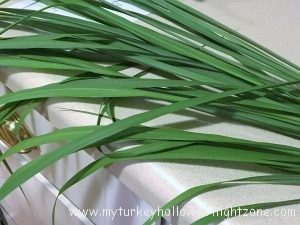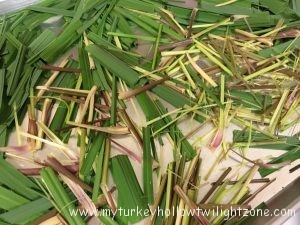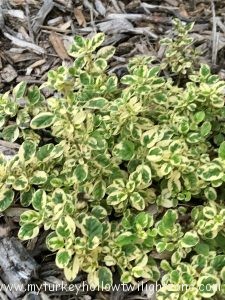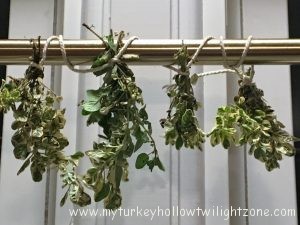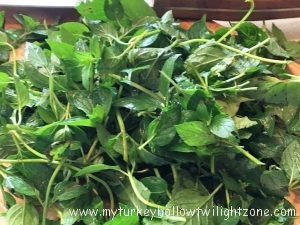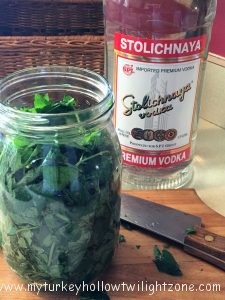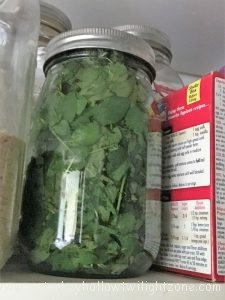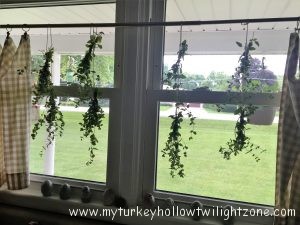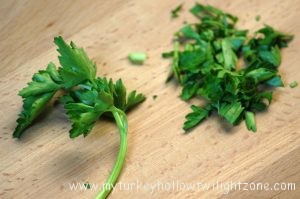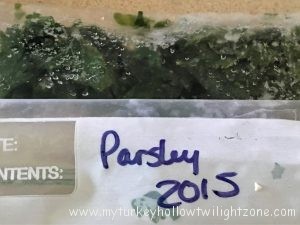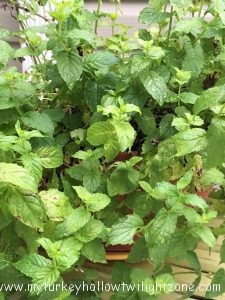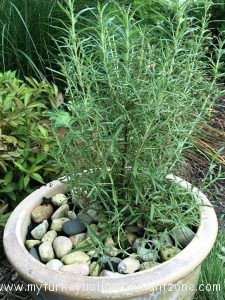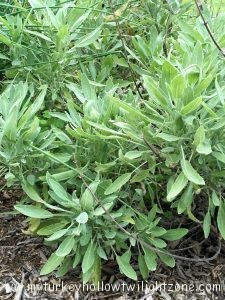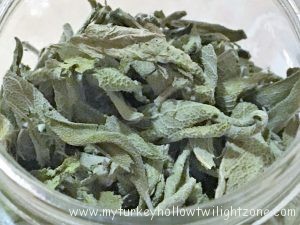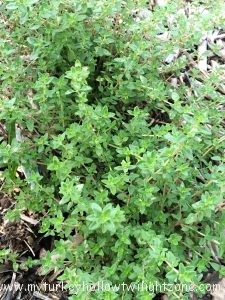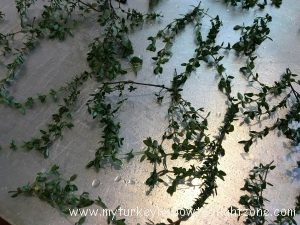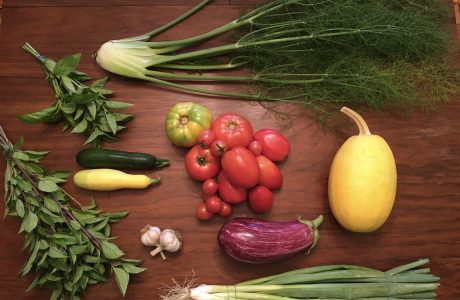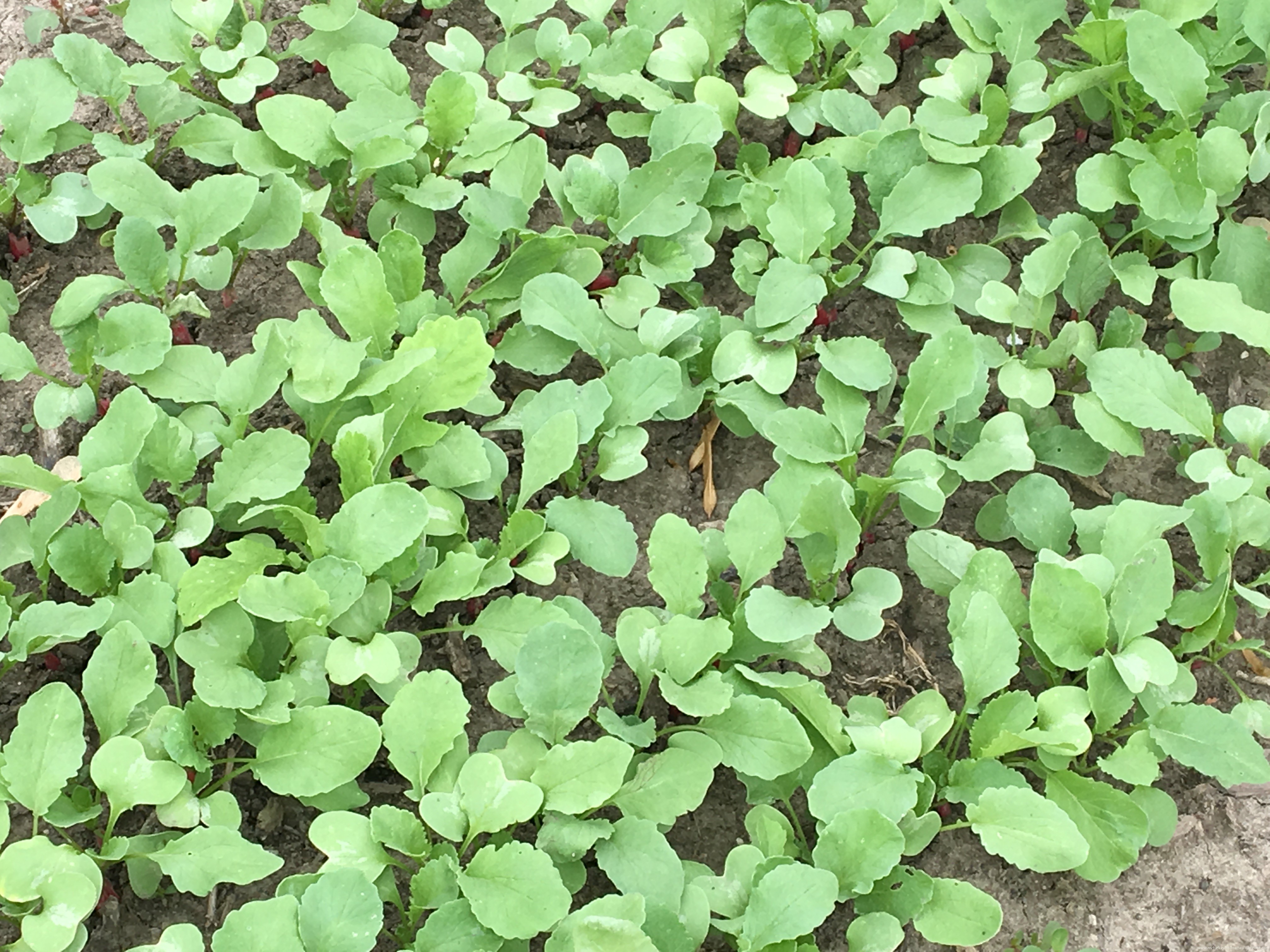Whether you’re new to gardening or have been gardening for a lifetime, herbs are some of the easiest plants to grow and maintain. Listed here are 13 culinary herbs to grow at home that can be easily harvested for use in your kitchen year round.
Not only are herbs delicious when used in the kitchen, they are both appealing to the eye in your landscape and many have additional health benefits as well.
While I am beginning to expand my horizons in the many uses of herbs, in this article I will focus mainly on some of the most common culinary herbs of which most I have used and had success with for many years.
There is a huge difference in the flavor of fresh herbs compared to dried herbs from the supermarket. They all have their place, and I do dry some of the herbs I grow to use during the winter months. The difference is that mine haven’t been sitting in a warehouse somewhere for heaven knows how long. Not only are they more flavorful, fresh herbs make your food more visually appealing. Bonus!
My herb garden is located in the northwest corner of my house. There is a good mixture of sun and shade in that spot and most anything I have put there grows well. Any of these can be planted from seed, but you can also buy them as transplants from you local nursery.
I tend to grow herbs that compliment the vegetables I grow in my vegetable garden. I think it’s silly to grow something in the vegetable garden, then have to go to the store to buy 10 other ingredients in order to use it. So, every winter when I’m planning my garden, I factor all of that in to what I plan to do with the produce and what herbs will work.
13 Herbs to Grow at Home
Basil
This is by far my favorite herb to grow. Unfortunately, I live in an area that does not support this plant as a perennial. I live in the Midwest in zone 5a. So this is an annual herb for me.
It is definitely worth planting every year. I love, love, love Italian food so this is a must in my herb garden.
I use this when I’m canning pasta sauce, on homemade pizza, in tomato based salads like Caprese Salad, roasted tomato soup, and in homemade basil pesto.
My preferred way to preserve basil is to freeze it.
It should be rinsed off and blanched first.
Then dipped immediately into ice water to stop the cooking process.
Then I give it a spin in the salad spinner to get all the excess water off of it.
Lay the individual leaves out on cookie sheets and freeze. After an hour or so, remove from the freezer and place in freezer bags or containers.
When I take this out of the freezer it thaws very quickly so I try to chop it, or slice into ribbons while it is still partially frozen. It’s a lot easier than trying to do it once it is thawed.
Chives
Chives is a great multipurpose herb. I have dried and frozen this with good results either way.
I usually harvest the chives in the spring before the flowers form. But once you cut them down, they will grow back to use fresh throughout the summer.
To dry it, just cut it close to the ground, rinse, cut up into small pieces with a scissors and lay out on a plate, cookie sheet, or towel to dry. It doesn’t take long. Then store in a jar.
To freeze, I cut it close to the ground and cut it up as above. Then I measure out about a tablespoon at a time, place it in a muffin tin and cover with water to freeze.
Once frozen remove from muffin tin and place in freezer bag or container.
Dried or frozen, it can be used in winter soups, or homemade chicken or vegetable stock. I also use the frozen chives in salad dressings and mixed with sour cream to top baked potatoes.
Dill
You get a 2 for one with dill. You can harvest both the leaves and the seeds.
The dill leaves are harvested before the flowers form. I have learned to grow this in my vegetable garden rather than with the rest of the herbs, because rabbits love this stuff. So I have to fence them out the best I can.
The leaves can be dried or frozen. I just rinse with water, snip the leaves up and freeze in muffin tins with water then store in freezer bag or, once rinsed lay out on a rack to dry and store in a jar.
I use dill leaves in seafood recipes, soup, and in salad dressings for lettuce salads, coleslaw, and cucumbers.
The seeds form as the plant matures and I mainly use these for pickling. The dill flowers that form on top the plant will eventually develop into seed heads. I cut them off and dry them in a paper bag
or use fresh when I make homemade pickles.
Garlic
Another one of my absolute favorites! I purchased garlic bulbs from a nursery many years ago and have never had to buy garlic since.
You cannot plant this from garlic bulbs purchased in the grocery store. They are usually treated with chemicals to prevent sprouting. Around here I was only able to find garlic for planting in the spring, which I did the first year. But garlic is really best planted in the fall. Even in my zone 5a climate, they will come back in the Spring, and your garlic bulbs will be much larger when planted in the fall.
Each year I take the biggest and best bulbs to set aside to use for planting in the fall. Every October, I divide these bulbs in to individual cloves to plant. Each clove will develop into a full bulb the following spring. And, every year the bulbs are bigger and bigger if you use the best ones to plant in the ground.
By early summer mine are usually ready to pull and harden by hanging them up in a dry place till the outer layers are paper-like. Then I cut the tops and roots back and keep in a cool dark room in my basement. They will last all winter.
Lemon Grass
Lemon grass is actually a new one for me. I am excited to see how well this hold up in the freezer. It smells amazing and my plan is to use it to cook with and to make lemon grass tea.
To freeze this I removed the plant from the ground and divided the individual bulbs, rinsed them off, trimmed and placed in a freezer bag. The bulbs will be used for cooking and the leaves can be used to steep for tea.
The leaves are being dried for tea.
This plant is also a annual in my region, so unless I take a bulb from it inside to root now, I will need to replant next year.
I have just cut it into about 2 inch pieces and spread it out on a cookie sheet to dry then store it in a jar. For tea just take a few pieces of this and steep for 15 minutes in hot water, drain the plant material, and sweeten with honey if desired.
Marjoram
Marjoram is another one I’ll have to plant as an annual but can be grown as a perennial in warmer zones. This one can be used along with or as a substitution for oregano. Since my Oregano is a perennial here in the Midwest, I don’t usually have a shortage of that, so I use marjoram as a companion in soup and fresh salad dressings.
This can be cut, rinsed, and hung upside down to dry.
Or the leaves can be stripped off the stem and frozen in muffin tins with water and stored in a freezer bag.
Mint Chocolate
I have grown mint for many years and have learned that mint really must be grown in containers. It is a very bad mannered herb and will take over your entire garden.
This year I happened to run across a Mint Chocolate plant. I tasted a leaf at the nursery before I bought it (something I recommend doing anytime you’re trying a new herb but aren’t 100 percent sure what it tastes like alone) and loved it!
But . . . what to do with it?
What I am doing with it is making an extract.
I took cuttings of the plant, rinsed it, stripped the leaves from the stems.
Then I very roughly chopped the leaves.
Put them in a jar and covered with good quality Vodka.
That is now sitting in a dark corner of my pantry. I give it a shake every day or two.
By early December (almost 4 months later) I will strain the liquid and have an extract to use in baking, and will be able to use small amounts as an addition to hot chocolate or coffee this winter. I hope it goes without saying, other than in cooking and baking, this is for adults only.
Oregano
Oregano is another of my favs. It grows as a perennial here and has gotten so big that I had to divide it this year. I still had a huge plant but I was able to share with friends which is one of the most rewarding things about gardening.
I believe oregano is best dried. I snip off stems before they have had a chance to flower, tie them upside down and let them dry in my kitchen window. I take in several harvests over the season just because my kitchen window is only so big and this plant develops new stems continuously throughout the season.
This is another of my Italian go to herbs for pasta sauce, fresh tomato salads, and for oven drying and roasting tomatoes for freezing.
Parsley
Parsley is another annual (technically it’s bi-annual if you save the seeds . . . I don’t) here in the Midwest. I go with the flat leaf parsley mainly for the visual effect in the recipes I use it in. I grow it in a container and always have plenty to harvest and use. Even after it freezes outdoors, I leave it in the container and use it until it turns brown.
I also keep a supply in my freezer for the winter.
To freeze this I rinse it off and spin it in the salad spinner to remove excess water. Then remove the leaves from the stems and lay them out on cookie sheets to freeze. Since I haven’t harvested my Parsley yet this year, here is a photo from last year.
Once frozen I transfer them to a freezer bag to keep in the freezer. This is another herb that once removed from the freezer thaws almost immediately so I chop it up right away while it’s still a little frozen so it doesn’t stick to my knife while I’m trying to work with it.
I use this fresh in salads and dressings, in pasta sauce, chopped with garlic and rosemary to rub on steaks, in soup just to name a few things. I also am one of those people who isn’t a huge fan of cilantro so when a recipe calls for cilantro, I substitute with flat leaf parsley. Those of you who love cilantro are cringing right now . . . I can see it. I can eat it, in fact one of my favorite dishes at my favorite Thai restaurant has cilantro in it. But a little goes a very long way so Parsley’s where it’s at for me.
Peppermint and Spearmint
These, I have learned must be grown in a container. They will take over your entire garden in no time. I learned this the hard way. It has taken years to get the majority of the spearmint out of the herb garden.
It’s a very refreshing herb and worth growing but it definitely needs to be contained.
I freeze this, again using the muffin tin and water method after stripping the leaves from the stem. I don’t use a lot of it in cooking although lamb and mint go well together and of course with fresh lettuce salads and spring vegetables. But I mainly use it in the occasional cocktail. Who doesn’t like a Mint Julep now and then?
Rosemary
Another at the top of my list. Rosemary is an annual here but I grow it in a container that I bring inside in the fall. While I have used dried rosemary I really do prefer it fresh. So I just bring the whole container inside and snip a little off the plant when I want it. Then take it back outside in the Spring.
I love it with roasted potatoes, on broiled or baked chicken, in soup and homemade chicken stock, and on steaks. And the pine scent it gives off is a bonus.
Sage
Since sage is a Thanksgiving staple, it seems almost un-American not to have it. It grows as a perennial and, like Rosemary, grows on woody stems.
I always dry some mainly for recipes I make in the winter by rinsing and hanging upside down then storing in a jar. But this is a pretty hardy plant so I can almost always count on it still going strong at Thanksgiving time, so I can cut bunches of it for turkey stuffing and homemade dressing. I can’t even explain the difference between fresh sage in your dressing compared to the dried sage from the supermarket.
Really . . . no comparison.
Thyme
Last but definitely not least, there is thyme. I grow this as a perennial and can harvest it a few times a season. Once you snip off the stems it will grow back and you can do it again.
I like to freeze this by rinsing, and laying the stems out on a cookie sheet to freeze, then put stems and all in freezer bags. When you use it you can either strip the leaves off the stems or, depending on what you’re making, leave the stems on. Just remember to remove them before serving.
I use this in pasta sauce, on seafood, in salad dressings and soups.
Conclusion
These are the main herbs I use on a regular basis. While there are many others out there, and hopefully I will continue to expand my horizons on this subject, and many more ways to use them, these are my go to favorites that best suit the flavors from my vegetable garden.
It wasn’t until more recent years that I really gave any consideration to the fact that it makes sense to grow things that compliment one another. And, while every year I have some new experiment going, I find a way to make things work together.
I’m always on the search for new ways to use herbs and am learning the medicinal uses of some of these herbs as well. However, we can get into that another day. Today, it’s all about the kitchen.
Bon Appétit!
“We are a participant in the Amazon Services LLC Associates Program, an affiliate advertising program designed to provide a means for us to earn fees by linking to Amazon.com and affiliated sites.”
© 2016 – 2017, Pamela. All rights reserved.
